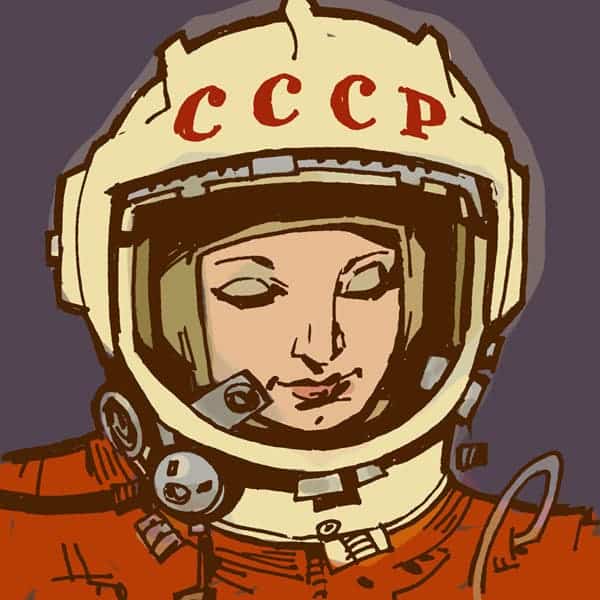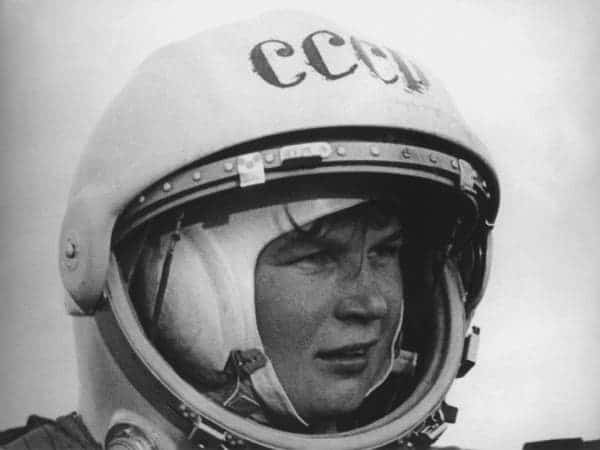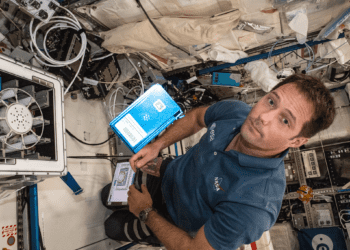Today, we still lament about the discrepant gender gap in STEM fields (science, technology, engineering, and mathematics) but things were a lot worse a century ago. Only a select few women got to be scientists in the ’50s and early ’60s — at least compared to the number of men who went on to earn a PhD — and this was during a time when things started to drift towards more liberal ground.
The USSR, however, didn’t seem to share the same gender bias in science as other countries, possibly because the Marxist doctrine upon which the regime was based took granting equal rights to both men and women very seriously, including their place in society. In 1964, some 40% of engineering graduates in the USSR were females compared to under 5% in the US. By the mid-1980s, 58% of Russian engineers were women.
Women of science in Soviet Russia

Roshanna Sylvester, a writer at Russian History Blog, has some thoughts as to why Soviet Russia might have succeeded where the United States failed — and is still failing, for that matter:
Analysis of pedagogical journals suggests that girls’ quest for advancement in the 1960s was aided by the USSR’s standard school curriculum, which privileged the study of math and the hard sciences. There are also hints that girls benefited from generalized efforts by science and math educators to identify and mentor talented students as well as to improve the overall quality of instruction in those fields. As far as influences beyond the school room, sociological studies (particularly those conducted by Shubkin’s group in Novosibirsk) offer support for the notion that parents played key roles in shaping daughters’ aspirations. But those results also suggest that girls’ ideas about occupational prestige both reflected contemporary stereotypes about ‘women’s work’ and offered up challenges to male domination in science and technology fields.
This is a valid point. Even in the 1960s, long after the war, there were millions of Russians that lived like they had for centuries: through subsistence farming. Science and a job in science, either as a doctor, engineer or electrician, offered a way out and promised a place for the “new man” in the “new world”. As such, many Russians of humble origins, including women, sought to study hard and win a place. One of these women who came out of the Russian system was Valentina Tereshkova. The daughter of a tractor driver and a textile plant worker in the Yaroslavl Region of Russia, Tereshkova left school when she was 17 to work as a textile factory assembly worker, as her mother had. However, she still insisted on earning her education and opted to study by correspondence. She was also a keen amateur skydiver through the DOSAAF Aviation Club in Yaroslavl and made her first jump in May 1959 at age 22. Two years later in April 1961, the Soviet Union launched Vostok 1, aboard which was Yuri Gagarin: the first man in space.
The first woman in space

The following year, in 1962, the Soviets launched a program for the new Vostok where they recruited 50 people to serve as cosmonauts, including five women. Of these five women, one would be selected as the first women in space. The prime candidate need not be a pilot, but since upon re-entry into the Earth’s atmosphere the pilot of the Vostok spacecraft would be ejected to make a landing by parachute, skydiving experience was a must. Thanks to her jumps, Tereshkova — a woman with little formal education — was selected as one of the five women, all of whom were much more qualified than her: test pilots, engineers, and world-class parachutists. After intensive training, however, Tereshkova proved she could make the final cut. In the end, Tereshkova was one of two final candidates.
On June 14, 1963, Vostok 5 was launched into space with cosmonaut Valeri Bykovsky aboard. With Bykovsky still orbiting the earth, Tereshkova was launched into space on June 16 aboard Vostok 6. The two spacecraft had different orbits but at one point came within three miles of each other, allowing the two cosmonauts to exchange brief communications. It was a stellar achievement! Not only did Tereshkova become the first woman in space, but with one single flight, she also logged more flight time than all previous American astronauts put together at the time – 70.8 hours in space with 48 orbits of the Earth. While in space, the first female cosmonaut performed experiments intended to assess the effects of microgravity and space on the human body and took photos that helped identify aerosols in the atmosphere.
Unfortunately, her landing wasn’t a smooth one: by the time she ejected from the capsule, Tereshkova was famished and dehydrated from poor food and agonizing injuries brought about from being strapped in her seat for three days straight. According to her own recent account (at the time, any kind of internal behavior that could discredit the Soviet Union would be immediately dismissed), when parachuting down, Tereshkova saw that she was heading for a large lake. With her body numb and weak, she doubted she could swim to shore. Luckily, a high wind blew her over to the shoreline and she landed safely, albeit roughly. Her nose banged pretty hard on her helmet and she had to wear makeup in public to cover up the subsequent bruises.
After landing, Tereshkova never flew again, but did study engineering at the Zhukovsky Air Force Academy and eventually obtained her Ph.D. in 1977. She also became a prominent politician, served on international councils, spoke at international conferences, played a critical role in socialist women’s issues, and was awarded the USSR’s highest honor, the Hero of the Soviet Union medal, along with many other awards.
Unfortunately, while at the surface the Soviet society cherished her, it was secretly eating her alive. After her flight, Tereshkova dealt with Air Force officials who sought to discredit her by claiming she was insubordinate and drunk on the launch pad (they were eventually dismissed) and pressured her into marrying Andrian Nikolayev, the only bachelor cosmonaut at the time, in a lavish ceremony presided over by Khrushchev himself. The marriage wasn’t happy at all, but if the two divorced it would have meant the end of both of their careers.
In 1978, the female cosmonaut program was finally relaunched, and Tereshkova immediately signed back up. While undergoing medical review, Tereshkova met and fell in love with physician Yuliy Shaposhnikov. Although she failed her medical review and never went back into space, Tereshkova separated from and successfully divorced her first husband (the divorce had to be approved by then-Premier Leonid Brezhnev; he granted it in 1982) and married Yuliy. Following the USSR collapse in 1991, she lost political office.
In 1999, her husband died and she retired to a small house on the outskirts of Star City. In 2013, at a state celebration for her seventieth birthday, Tereshkova said she’d love to go to Mars, jokingly or not, even if it was a one-way mission. The former cosmonaut isn’t alone in committing herself to such a mission: thousands of people from around the world have signed up to a project called Mars One, which has announced plans to launch a private mission to land a group of four men and women on Mars in 2023 to found a permanent colony. So far, a hundred people have been shortlisted.
Needless to say, there are a lot of things we can learn from Tereshkova’s story, but there’s also a lot we can learn from the USSR’s approach to women in science. Take this letter from a girl in Ukraine to Yuri Gagarin:
I have wanted to ask you for a long time already: ‘is it possible for a simple village girl to fly to the cosmos?’ But I never decided to do it. Now that the first Soviet woman has flown into space, I finally decided to write you a letter….I know [to become a cosmonaut] one needs training and more training, one needs courage and strength of character. And although I haven’t yet trained ‘properly’, I am still confident of my strength. It seems to me that with the kind of preparation that you gave Valia Tereshkova, I would also be able to fly to the cosmos.
Now, compare it to this letter written by a fifteen-year-old American girl to John Glenn:
Dear Col. Glenn, I want to congratulate you on your successful space flight around the earth. I am proud to live in a nation where such scientific achievements can be attained. I’m sure it takes a great amount of training and courage for you to accomplish such a feat. It was a great honor to witness this historical event. I would very much like to become an astronaut, but since I am a 15 year old girl I guess that would be impossible. So I would like to wish you and all of the other astronauts much success in the future.






